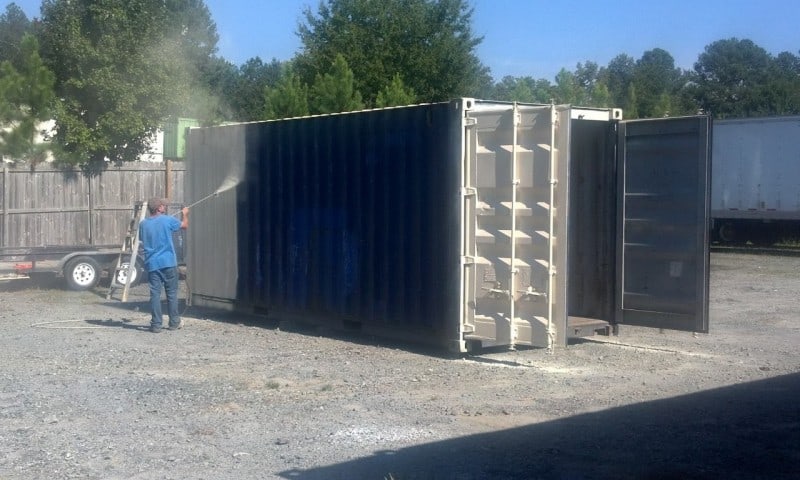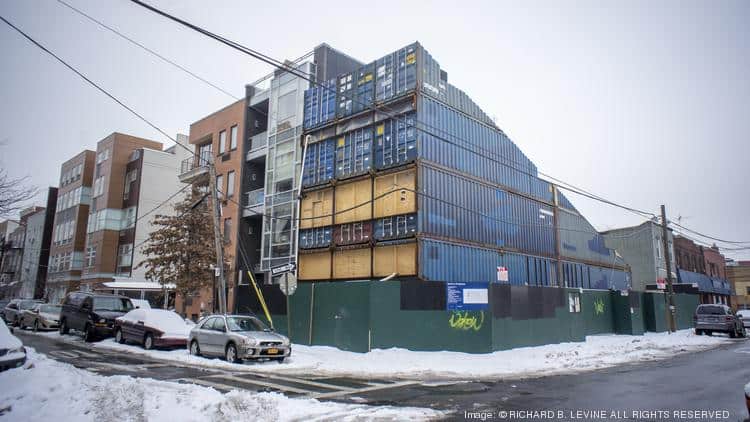If well looked after there is every reason that a shipping container building can outlive the people who built it in the first place – a hundred years or more might be possible. When made for their original job, 10 years travelling the world carrying goods from A to B, there are strict specifications that dictate just how much abuse a shipping container can take. After you have repurposed the container, there are things you can do to ensure that it lasts well into the future – we will discuss this too.
Cargo weights
Shipping containers are designed to carry just under 27 tonnes of cargo per 40ft unit, and just over 28 tonnes for a 20ft unit. This is largely limited by different countries’ regulations as to how much weight can be carried in a lorry. Overloaded lorries can damage roads, and even the most advanced nations’ roads can carry only a certain amount of goods.
Stackable containers
Another aspect of shipping containers is that they can be stacked up to eight high, even fully loaded, as long as they are stacked corner to corner and locked together. The corners of the containers are designed to take immense loads in excess of 60 tonnes on each corner, or a total weight of 240 tonnes for each!

Durable flooring
Traditionally the wooden floors of shipping containers are made of hardwood plywood and are designed to take large weights, and can have over 6,000 loading and unloading movements in their careers. Lately though due to the fact that hardwood trees are slow growing and many are being clear cut from virgin forests without being replaced, there has been a shortage of hardwood for containers. Manufacturers are increasingly using fast growing bamboo as an alternative. This again is hard wearing and can take a lot of abuse.

Watch the roof
When stacking containers one of the reasons you need to ensure they fit precisely together on their corners is that the roofs themselves are quite weak by comparison to the corners and floors. These are only designed to up to around 200kgs over an area of 600 x 300 mm (so a man can stand on top to do maintenance), which by comparison to the loads on the corners and floors is the container’s Achilles heel. This is why most multi-storey container buildings are stacked in a similar way to containers on a ship or in port – corner to corner – so the loads are carried through the corner posts.
Architects have worked out ways around the issue, using cantilevers from the corner posts so even though they appear to be stacked haphazardly the loads are carried through the load bearing parts of the containers and not through the weak roofs. Using these techniques, they can make buildings that don’t just look like a converted container storage area in a port!
Primed for heavy seas
Because shipping containers are made of special Cor-Ten steel and are carefully painted with weatherproof paint, they are able to take a lot of abuse from the elements. Cor-Ten steel is designed to corrode for the first millimetre or so and this corrosion creates a protective barrier against the elements. Primed and then painted with several coats of hardwearing paint, shipping containers frequently don’t use the Cor-Ten’s hardwearing properties for many years as the paint keeps the elements at bay.
Check out this amateur footage of containers in the midst of a Pacific storm.
They even float
.jpg)
One of the biggest hazards to ocean going yachts in some of the busiest waterways in the world, such as the Bay of Biscay in Europe are containers floating just beneath the surface that have fallen off ships in storms. Just like icebergs, only a tiny fraction of the container itself will be above the surface and they are very hard to see even in mild sea conditions let alone at night! As a result, many a yacht has been either holed or lost its keel when they hit a container at sea.
The fact that they can float even with 20 tonnes of cargo shows you just how tough these boxes can be!
Into the future…

Once the shipping container has been sold on for reuse, you can help make it last for many years to come. At Gateway Container Sales we check over our containers when we receive them and take care of any corrosion before repainting them ahead of delivery to our customers. As with your house, you still need to check the paintwork every five or so years and sand back any rust you see before re-painting. If you do that there’s every reason your shipping container conversion could outlive you!
We provide shipping containers tough enough for your needs
At Gateway Container Sales we have hundreds of shipping containers in stock for architectural or storage purposes. Get in touch with us and find out how you can turn your container into the home or office solution that suits your needs. We can point you in the direction of the right people to help you move through the process from design to installation.
